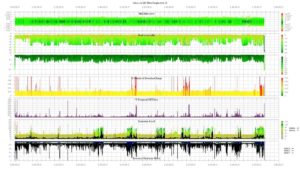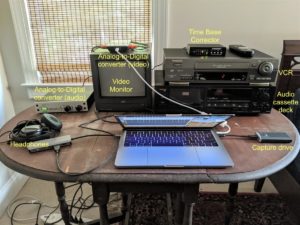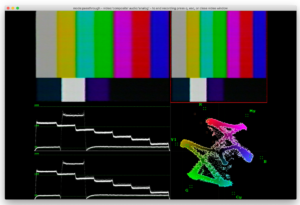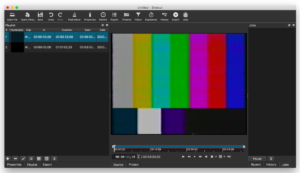How are we continuing to digitize Emory Libraries audiovisual material during COVID-19? By building a home digitization station, of course!
Although our audio and video digitization workstations have many parts, their core components are actually quite portable. Taking cues from resources in the moving image archives community (in particular, Ashley Blewer’s Minimum Viable Station and NYU’s mobile video kit), I pulled a few key pieces of equipment from the audio and video digitization stations in the library (thank you to Marty and Terence for facilitating this pick-up!), brought them home, and set up a VHS and audio cassette digitizing station that fits on a tabletop and runs on my laptop.

Vrecord produces this very helpful graph of the video file, for capture quality assurance. Everybody loves graphs!
Because our video digitization workflow was upgraded last year and uses exclusively open-source software, it was easy to pull the pieces that were needed for this part of the workstation.
Our audio workflow was a bit more complicated, but with the right patch cables and a switch to Audacity for capture and processing software, I was able to keep the equipment needed to a minimum while retaining the same capabilities as our in-library workstations.
Add in a blu-ray drive and some basic audiotape repair tools (splicing tape, tweezers, splicing block, spare cassette parts), and we’re equipped for optical media and basic audio conservation, as well. Once content is captured and processed, VPN access allows it to be uploaded to the Keep, just as if we were working from within Woodruff Library at Emory University.
The only real difference between this setup and what’s in the Preservation department at the library is the number of different types of playback equipment that are connected – for VHS, audio cassettes, and CDs/DVDs/Blu-Rays, this station can do everything we would normally do in the library. The majority of audiovisual materials we work with fall into one of these categories, so with this station, we are able to keep up with the library’s AV digitization needs while working from home.
Nina Rao, AV Conservator-Emory Libraries




